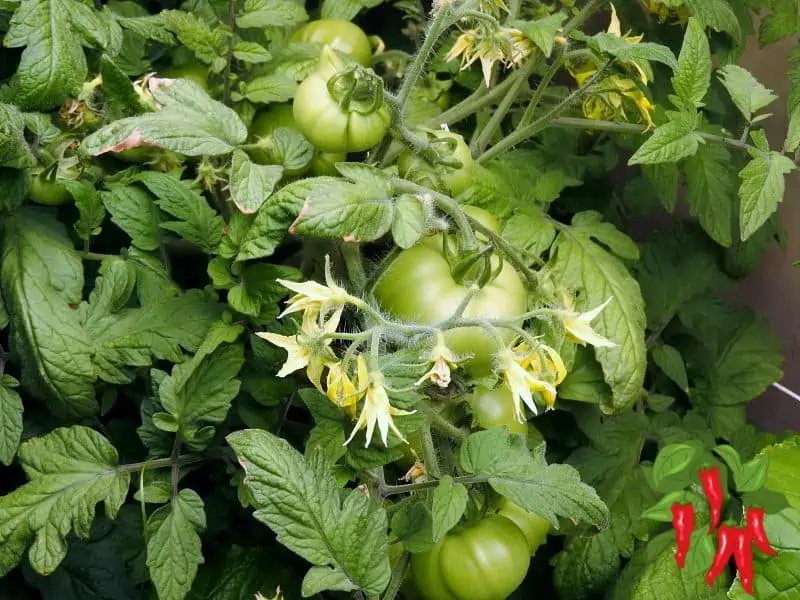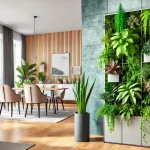This post may contain affiliate links. If you buy something from one of our links we may earn a commission. Thanks
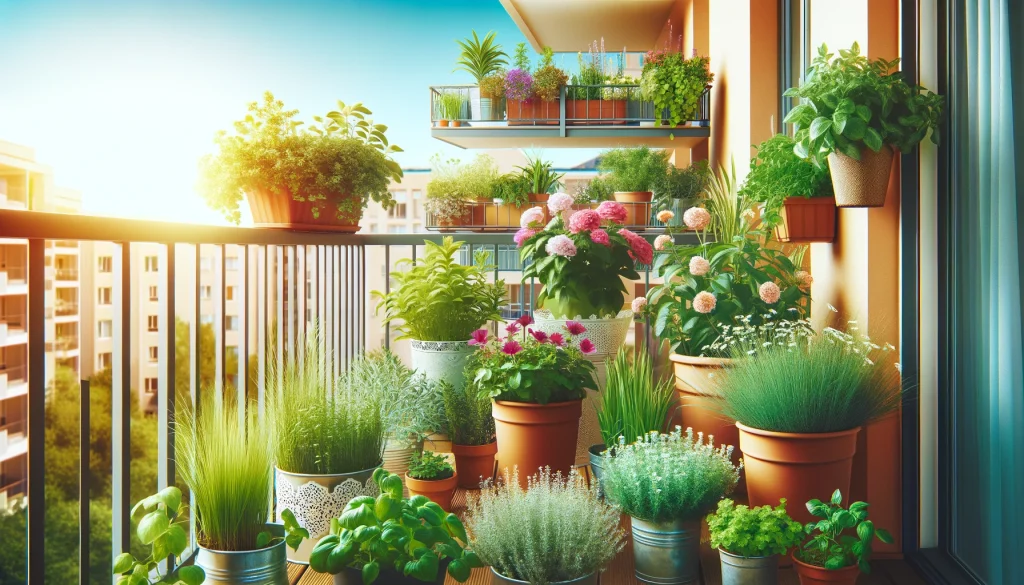
Ever thought about using apartment balcony plants to create your own personal mini-jungle?
Imagine stepping out into your own slice of green paradise every morning. We’re here to show you just how doable it is to sprinkle a bit of plant magic on your balcony, no matter the size!
From picking the perfect plants that thrive in balcony conditions to mastering the art of plant care, we’ve got all the insider tips and tricks you need.
Ready to transform your outdoor space into a blooming, vibrant garden that’s the envy of your neighbors?
Let’s dive in and make your balcony the lush retreat you’ve always dreamed of.
Key Takeaways:
Introduction Apartment Balcony Plants
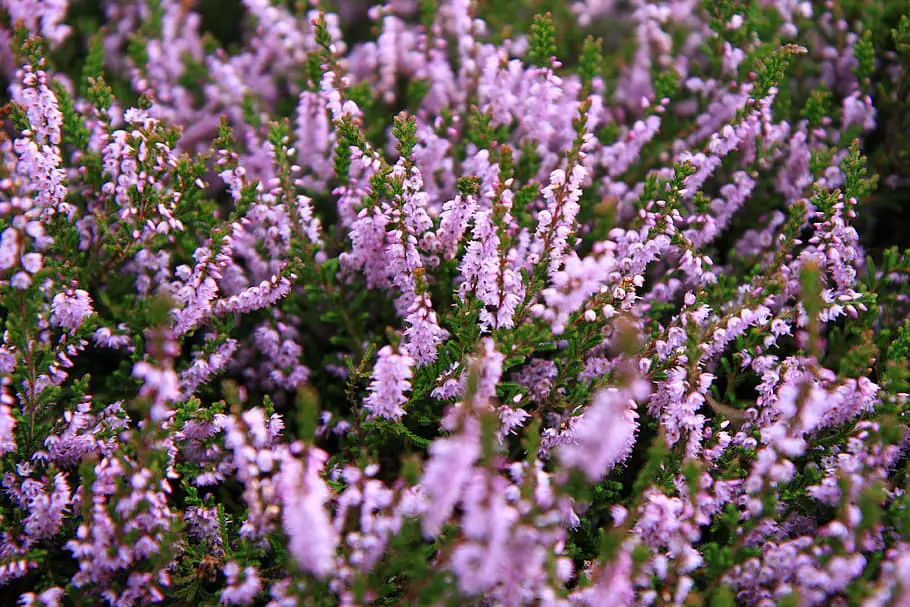
Embracing Nature in Urban Spaces
Imagine stepping onto your apartment balcony and being greeted by a lush, vibrant garden.
The benefits of having plants on apartment balconies are numerous, from enhancing the aesthetics of your space to improving air quality.
Transforming Your Balcony into a Green Retreat
Not only do plants add a touch of nature and beauty to your urban dwelling, but they also offer a sense of privacy and a peaceful retreat from the hustle and bustle of city life.
Whether you’re growing a fragrant herb garden or a colorful array of flowers, the presence of plants can boost your mood and reduce stress.
Cultivating Your Own Oasis
In this article, we’ll explore the top reasons to plant on your apartment balcony and how you can create your own green oasis.
In the next sections, we’ll dive into the specific reasons why planting on your apartment balcony is a great idea, along with tips for choosing the right plants and caring for them.
So, let’s get started on this exciting journey to transform your balcony into a flourishing garden!
5 Reasons to Plant on Apartment Balconies
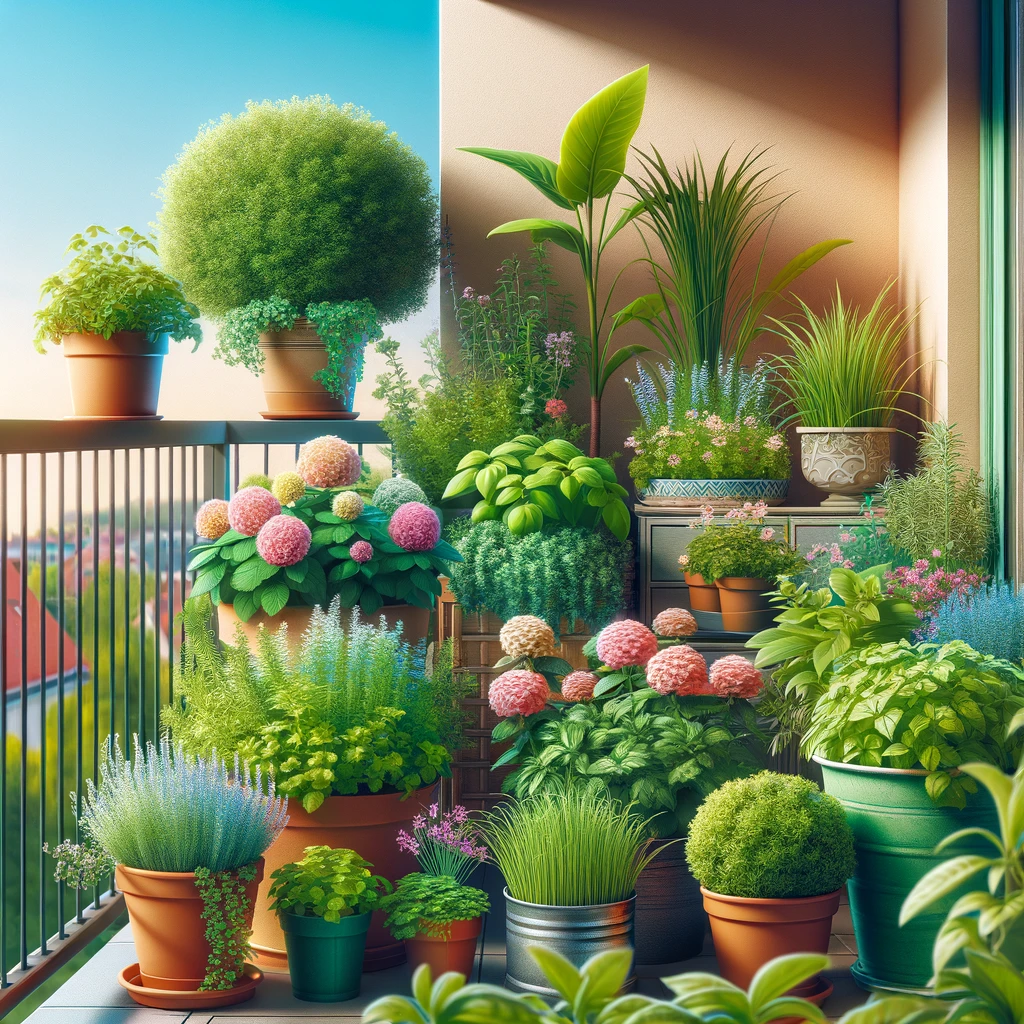
Here are 5 reasons why you want apartment balcony plants:
1. Enhancing Aesthetics
Plants are nature’s art, adding life, color, and beauty to balconies and transforming them into more inviting spaces.
A well-planted balcony can serve as a visual feast, with vibrant flowers, lush greenery, and intricate leaf patterns creating a stunning display that enhances the overall aesthetic of your apartment.
2. Improving Air Quality
Plants are natural air purifiers, absorbing pollutants and releasing oxygen, leading to a healthier living environment.
By incorporating plants into your balcony garden, you can improve the air quality in and around your apartment, making it a fresher and more pleasant place to live.
3. Providing Privacy and Shade
Strategically placed plants can create a natural barrier, offering privacy and protection from the sun.
Tall plants or climbers can shield your balcony from prying eyes, while broad-leaved varieties can provide welcome shade on hot days, making your outdoor space more secluded and comfortable.
4. Boosting Mood and Reducing Stress
Being around plants has a calming effect, helping to reduce stress and improve mental well-being.
The act of gardening itself can be therapeutic, offering a peaceful escape from the stresses of daily life.
A balcony filled with plants can become a tranquil haven where you can unwind and recharge.
5. Offering Fresh Produce
Growing edible plants like herbs, tomatoes, and lettuce provide access to fresh, homegrown produce, adding flavor and nutrition to meals.
Having a mini vegetable garden on your balcony not only brings the joy of harvesting your own food but also ensures that you have a supply of organic, pesticide-free ingredients at your fingertips.
Choosing the Right Plants for Apartment Balconies
Considerations for Selecting Plants
When selecting plants for your apartment balcony, it’s important to consider the following factors:
- Space: Assess the available space on your balcony. Compact plants or those with a vertical growth habit are ideal for small areas.
- Sunlight: Determine the amount of sunlight your balcony receives. Choose plants that are suited to the light conditions, whether full sun, partial shade, or full shade.
- Weight: Consider the weight of the pots and soil, especially for balconies with weight restrictions. Opt for lightweight containers and soil mixes.
- Wind Exposure: Balconies can be windy, so select plants that can tolerate or are protected from strong winds.
Recommended Plants for Various Conditions
- Herbs: Ideal for sunny spots, herbs like sage, thyme, and rosemary are easy to grow and great for culinary use. For shadier balconies, consider mint, parsley, or dill.
- Succulents: Perfect for sunny, dry conditions, succulents such as aloe vera, agave, and cacti require minimal watering and care.
- Chrysanthemums: These colorful flowers are adaptable and can add a pop of color to your balcony.
- Begonias: Ideal for shaded balconies, begonias offer beautiful flowers and foliage and thrive in cooler temperatures.
- Japanese Maple: A small, leafy tree that can add a touch of elegance to shady balconies.
- Strawberries: a delicious fruit grown in containers or hanging baskets in sunny spots.
- Tomatoes: Versatile and perfect for warm, sunny balconies, tomatoes can be grown in various types of containers.
- Jasmine: A vining plant with a heavenly scent, jasmine is great for creating a natural screen on sunny balconies.
- Marigolds: Bright and low maintenance, marigolds are excellent for adding color and can help deter pests.
- Pansies: With a variety of colors, pansies are perfect for early spring blooms in cooler temperatures.
- Fuchsia: A shade-loving perennial that looks stunning in hanging baskets.
- Petunias: Easy to grow and available in several colors, petunias require good fertilization and plenty of sun.
- Ferns: Ideal for shady balconies, ferns add lush greenery and can grow well in containers.
Table 1: Recommended Plants for Various Balcony Conditions
| Light Condition | Plant Type | Examples |
|---|---|---|
| Full Sun | Flowers | Marigolds, Petunias, Geraniums |
| Vegetables | Tomatoes, Peppers, Strawberries | |
| Herbs | Basil, Rosemary, Thyme | |
| Partial Shade | Flowers | Begonias, Impatiens, Fuchsia |
| Vegetables | Lettuce, Spinach, Kale | |
| Herbs | Parsley, Cilantro, Mint | |
| Shade | Flowers | Ferns, Hostas, Coleus |
| Vegetables | Arugula, Swiss Chard, Radishes | |
| Herbs | Chives, Lemon Balm, Oregano |
Choosing the right plants for your apartment balcony involves considering the specific conditions of your space and selecting varieties that will thrive. Whether you’re looking to add color, fragrance, or fresh produce to your balcony, there’s a plant that’s perfect for you.
Caring for Balcony Plants
Caring for plants on your apartment balcony requires attention to watering, fertilizing, and protecting them from pests and diseases. Here are some tips and strategies to ensure the health and longevity of your balcony garden:
Watering
- Consistency: Water your plants regularly, keeping the soil moist but not waterlogged. The frequency of watering will depend on the plant type and weather conditions.
- Morning Routine: Water your plants in the morning to reduce evaporation and allow the water to reach the roots before the heat of the day.
- Drainage: Ensure that your pots have proper drainage holes to prevent water from accumulating at the bottom and causing root rot.
Fertilizing
- Regular Feeding: Fertilize your plants according to their specific needs, usually every 2-4 weeks during the growing season.
- Balanced Nutrition: Use a balanced, water-soluble fertilizer to provide essential nutrients like nitrogen, phosphorus, and potassium.
- Avoid Overfertilizing: Too much fertilizer can harm your plants, so follow the recommended dosage and frequency.
Pest and Disease Control
- Regular Inspections: Check your plants regularly for signs of pests or diseases, such as discolored leaves, spots, or insects.
- Natural Remedies: Use natural remedies like neem oil, insecticidal soap, or homemade solutions to control pests without harming beneficial insects.
- Isolation: If a plant is infested or diseased, isolate it from the others to prevent the spread.
Maximizing Space and Health
- Vertical Gardening: Utilize vertical space by installing shelves, wall planters, or trellises to grow climbing plants.
- Hanging Baskets: Hang baskets from the ceiling or balcony railing to add greenery without taking up floor space.
- Window Boxes and Planters: Use window boxes and planters to organize your plants and make efficient use of limited space.
- Proper Placement: Arrange your plants to ensure they receive adequate sunlight and air circulation, which is crucial for their health.
Table 2: Care Tips for Balcony Plants
| Care Aspect | Tip |
|---|---|
| Watering | Water in the morning; ensure proper drainage; use self-watering containers for convenience. |
| Fertilizing | Use a balanced, water-soluble fertilizer every 2-4 weeks during the growing season. |
| Pest Control | Inspect regularly for pests; use natural remedies like neem oil or insecticidal soap. |
| Sun Protection | Use shade cloth or umbrellas to protect sensitive plants from intense sunlight. |
| Wind Protection | Secure planters to the railing; choose wind-resistant plants or use trellises as windbreaks. |
By following these care tips and employing space-saving strategies, you can maintain a healthy and vibrant balcony garden that provides beauty, relaxation, and even fresh produce.
Overcoming Challenges of Balcony Gardening
Balcony gardening comes with its unique set of challenges, from limited space to varying sun and wind exposure.
Here are some tips and creative solutions to help you navigate these obstacles:
Limited Space
- Vertical Gardening: Utilize vertical space by installing wall planters, trellises, or shelves to grow plants upwards instead of outwards.
- Container Selection: Choose containers that fit your space efficiently. Consider using railing planters or hanging baskets to free up floor space.
- Multipurpose Plants: Opt for plants that serve dual purposes, such as herbs that can be used for cooking or flowering plants that attract pollinators.
Varying Sun and Wind Exposure
- Plant Selection: Choose plants that are suited to your balcony’s sun exposure. For sunny balconies, consider succulents or heat-tolerant flowers. For shaded balconies, ferns or shade-loving flowers are ideal.
- Wind Protection: Use heavier pots or secure planters to the railing to prevent them from toppling over in strong winds. Consider planting wind-resistant species or using trellises as windbreaks.
- Sun Protection: If your balcony receives intense sunlight, use shade cloth or umbrellas to protect sensitive plants from sunburn.
Local Regulations
- Check Restrictions: Before starting your balcony garden, check with your building management or homeowners association for any restrictions on gardening.
- Compliance: Ensure that your garden complies with weight limits, safety regulations, and aesthetic guidelines set by your building or local authorities.
- Community Resources: Look for community gardening resources or forums where you can get advice and share tips with fellow balcony gardeners.
Creative Solutions for Design and Arrangement
- Theme Gardens: Create a themed garden, such as a culinary herb garden, a butterfly garden, or a succulent garden, to add a personal touch to your space.
- Color Coordination: Plan your plant and container colors to create a cohesive and visually appealing balcony garden.
- Flexible Layout: Use movable planters or modular systems to easily rearrange your garden as needed, allowing for flexibility in design and plant care.
By addressing these challenges with thoughtful planning and creative solutions, you can create a thriving and enjoyable balcony garden that enhances your urban living space.
The Rewards of Balcony Gardening Conclusion
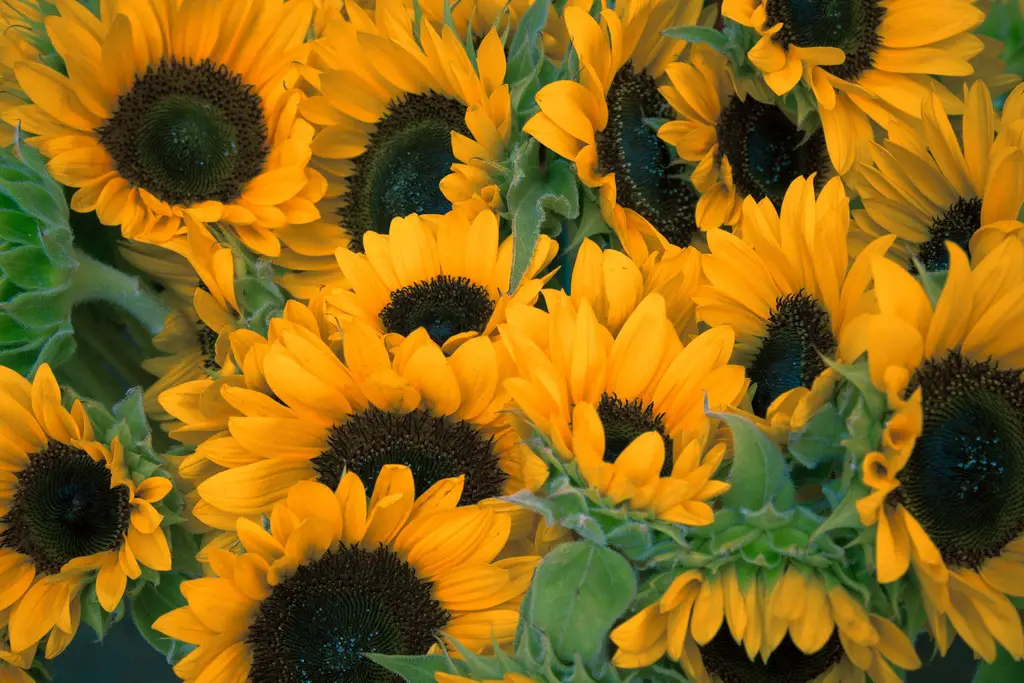
Balcony gardening offers a multitude of benefits, from enhancing the aesthetic appeal of your urban living space to improving air quality and providing a source of fresh produce.
It’s a wonderful way to connect with nature, reduce stress, and create a private oasis amidst the hustle and bustle of city life.
A Call to Action for Urban Gardeners
We encourage you to embrace the joy of balcony gardening. Start small with a few pots of herbs or flowers, and gradually expand your garden as you gain confidence and experience.
With a little creativity and care, your balcony can transform into a lush, vibrant garden that offers beauty, tranquility, and a sense of accomplishment.
Embarking on Your Gardening Journey
So, go ahead and plant the seeds of your balcony garden today. Embrace the challenges, celebrate the successes, and enjoy the journey of creating your very own green haven in the sky.
Read and learn more: Apartment Balcony Gardening: Easy Beginners Guide
VII. Apartment Balcony Plants FAQs
Balcony gardening can be a rewarding way to transform your limited outdoor space into a thriving green oasis.
In this section, we’ll answer some of the most commonly asked questions to help you navigate the world of balcony gardening with confidence.
Q. How do I start a balcony garden?
A. Starting a balcony garden begins with assessing your space and understanding your balcony’s capabilities.
Consider the amount of sunlight your balcony receives, the strength and size of your balcony, and your building’s gardening policies.
Choose appropriate containers and plants that are suitable for these conditions, and start small to gradually learn and expand your garden.
Q. What plants are best for a small balcony garden?
A. The best plants for a small balcony garden are those that can thrive in limited space and the specific light conditions of your balcony.
Opt for resilient, low-maintenance plants like coneflowers, petunias, or herbs such as basil and mint.
Consider the sunlight requirements and choose plants that match your balcony’s exposure.
Q. How do you arrange plants on a small balcony?
A. To arrange plants on a small balcony, start by assessing your space. Use vertical planters, wall-mounted shelves, and hanging pots to make the most of the height.
Group plants by their sunlight and water needs, ensuring each gets the right amount of care.
Also, consider using multi-purpose furniture, like benches with storage, to keep gardening tools handy yet out of sight.
Q. How can I maximize my balcony garden?
A. To maximize your balcony garden, think in layers. Use the floor for larger pots, railings for medium-sized plants, and the space above for hanging plants.
Vertical gardening, using trellises or climbing plants, can also help you make the most of your vertical space.
Additionally, choosing the right soil, fertilizing techniques, and efficient watering methods are crucial for maintaining a healthy and productive garden.
VIII. Resources
For those interested in diving deeper into balcony gardening, here are some valuable resources to further your knowledge and skills:
- Growing Vegetables and Flowers in Containers – Penn State Extension provides insights into container gardening, highlighting the benefits and offering tips for success. Learn about choosing suitable containers, selecting the right growing medium, and more Penn State Extension.
- Vegetable Gardening in Containers – Virginia Tech offers a comprehensive guide on container vegetable gardening, covering aspects like fertilizing, general care, and indoor container gardening with vegetables Virginia Tech.
- Gardening with Limited Space – University of Florida, IFAS Gardening Solutions provides ideas for side yard gardens and balcony gardens, including tips on how much sun you need and using self-watering containers University of Florida.
- Planning a Garden – Clemson University’s Home & Garden Information Center offers advice on planning a garden, including information on vegetable crop planting times and soil health. Clemson University.
- Container Vegetable Gardening – Clemson University also provides a detailed guide on container vegetable gardening, discussing soil mixes, planting, watering, and more Clemson University.
- Home Gardening – University of Georgia Cooperative Extension shares tips on growing various vegetables, including onions, potatoes, squash, and sweet corn, along with irrigation advice. University of Georgia.
- Urban Agriculture – NC State Extension discusses the concept of urban agriculture and its various forms, including balcony gardening NC State Extension.
- Vegetable Gardening – University of Missouri Extension provides information on vegetable gardening, including irrigation tips and details on different vegetable families University of Missouri.
- Planting and Growing Guides – University of Minnesota Extension offers guides on hydroponics, watering, and managing diseases, pests, and other common problems in gardens University of Minnesota.
- Texas Home Vegetable Gardening Guide – Texas A&M AgriLife Extension Service provides a manual for home gardeners with information on garden planning, crop selection, soil preparation, and more Texas A&M AgriLife.
- Fruit, Vegetable, and Herb Gardening – Utah State University Extension offers gardening tips for various fruits, vegetables, and herbs, including blackberries, broccoli, Brussels sprouts, and calendula Utah State University.
These resources offer a wealth of information to help you successfully create and maintain a balcony garden.
Whether you’re looking to grow vegetables, flowers, or herbs, these guides provide the knowledge you need to get started and thrive in your urban gardening endeavors.
Visit my Amazon Influencer Page for videos and gardening products Grow Your Own Garden








